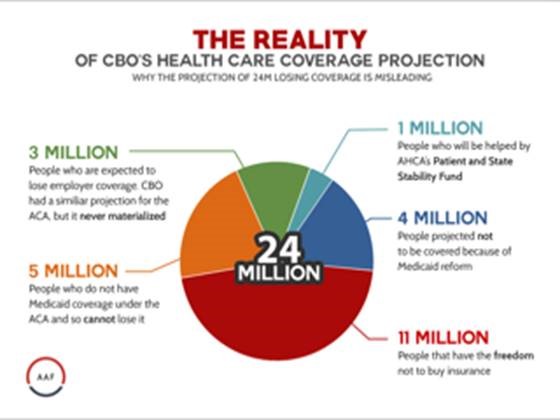The Daily Dish
March 23, 2017
Parsing the CBO’s Estimated Coverage Impacts of the AHCA
On Tuesday the Supreme Court of the United States voted 6-2 to limit the president’s power to temporarily fill agency vacancies while nominees go through confirmation. The decision comes following President Obama’s temporary appointment of Lafe Solomon to the position of National Labor Relations Board (NRLB) acting counsel. The court argued that Solomon should never have been allowed to serve and that his appointment violated the 1998 Federal Vacancies Reform Act.
Yesterday Army Vice Chief of Staff General Dan Allyn stated that if Congress extends the continuing resolution (CR) past April that the Army will run out of money in its readiness budget by the summer. Allyn stated that under a CR the Army will not receive $4 billion that had been budgeted for “direct readiness deliverables.” Allyn stated that he fears if the CR is continued and the Army loses out on the $4 billion budgeted for 2017 the gains that the Army has made could be lost. There is a possibility that the CR could extend to the end of the year, which would keep government spending at 2016 levels.
Eakinomics: Parsing the CBO’s Estimated Coverage Impacts of the AHCA
Today the House is scheduled to vote on the American Health Care Act (AHCA) — the so-called repeal and replace bill. When the Congressional Budget Office analyzed the bill it wrote “CBO and JCT estimate that enacting the American Health Care Act would reduce federal deficits by $337 billion over the coming decade and increase the number of people who are uninsured by 24 million in 2026 relative to current law.” (JCT is the Joint Committee on Taxation.)
AAF took a closer look at that 24 million figure, the results of which are displayed below.

CBO said that it expected that by next year (2018) — when, because the AHCA is phased in, essentially nothing would have changed except that the individual mandate was gone — that 6 million fewer people would purchase individual insurance and 5 million fewer people would participate in the free Medicaid program. Put differently, 11 million people would exercise their freedom to choose and be voluntarily uninsured. In addition, CBO had been anticipating that 5 million more individuals would sign up for Medicaid at some point in the future under Obamacare and that under the AHCA they would not be eligible. That means those 5 million don’t even have Medicaid to lose.
Adding that up, 16 million — two-thirds of the 24 million — are either voluntarily uninsured or never were insured in the first place. That’s a far cry from the media’s portrayal of the AHCA ripping insurance out of peoples’ hands.
CBO adds another 4 million losing Medicaid because it assumes (as it must by law) that the Medicaid program will simply run for the next 10 years exactly as it does now. Unfortunately, given the massive red ink facing the federal government, that is inconceivable. Instead, the correct comparison is between the AHCA Medicaid reform and an alternative reform at some point in the future.
That leaves 4 million individuals for whom judgment calls had to be made about the behavior of their employers (3 million) and the efforts of states on their behalf under funds provided by the AHCA (1 million). Regardless of how those calls get made, the resulting uninsurance is not as significant as it sounds in light of the over 230 million lives that will be covered at that time.
Fact of the Day
Enrollment in Medicare Advantage has continued to increase, covering more than 30 percent of Medicare beneficiaries in 2016, despite projections that enrollment would shrink











